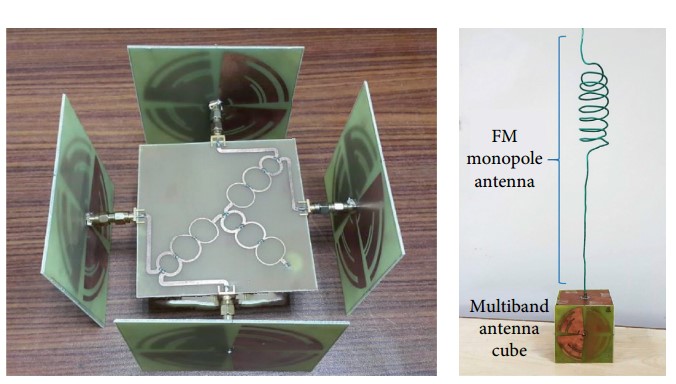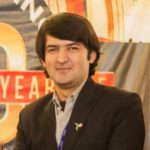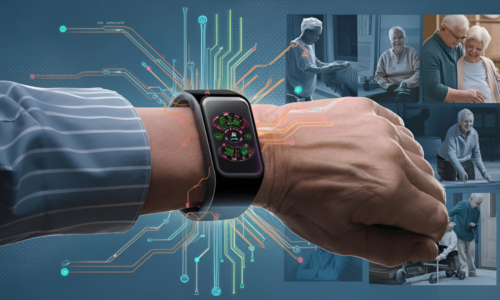The Internet of Things (IoT) is a robust network that allows inter-networking of devices with sensors and actuators to collect and exchange information. It finds numerous applications in various applied fields such as agriculture, environmental monitoring, medical and healthcare, energy management, infrastructure management, building and home automation. The IoT market is expected to grow from an installed base of 17.68 billion devices in 2016 to 75.4 billion in 2025. The technological advancement in the field of IoT has made it possible to develop low powered IoT devices. However, in many cases such IoT sensor networks/devices are not easily accessible. Furthermore, they are usually powered by large size and heavy batteries which also make the battery replacement more difficult and inconvenient. Therefore, energy harvesting techniques are used to power them. In particular, the RF energy harvesting techniques are being used to remotely power up inaccessible devices and depend on distance and the available RF source in the environment. However, one of the major issues with the ambient RF waves is their very power density which is due to the large amount of energy dissipation as heat as well as the absorption by the materials in the environment [1]. This aspect has opened new avenues for researchers across the globe to develop highly efficient RF energy harvesting systems, also commonly known as rectennas, to power up the IoT devices.
A research team at NUST Research Institute for Microwave and Millimeter-Wave Studies (RIMMS) lead by Dr. Nosherwan Shoaib have investigated the possibility of powering low power IoT devices via efficient RF energy harvesting system i.e. rectenna. In this context, the research team have conducted an indoor and outdoor RF field survey in a local semi-urban environment and measured the peak ambient power at various frequency bands as shown in Figure 1 [2].
![Figure 1. RF Field Survey [2]](https://researchblog.nust.edu.pk/wp-content/uploads/2021/01/Figure-1.-RF-Field-Survey-2-300x193.jpg)
From RF field survey shown in Figure 1, it is concluded that the potential useful RF energy sources are available at FM, GSM900, GSM1800, 3G and Wi-Fi bands. Based on this analysis, the team have developed a quad-band 3D rectenna array as shown in Figure 2 [2]. The rectenna system is able to harvest energy from four frequency bands i.e. FM, GSM900, GSM1800 and Wi-Fi bands. The 3G band will be incorporated in future designs. As shown in Figure 2, the rectenna has a cube shape containing multiband cross-dipole antennas at its sides and a FM monopole antenna at the top. The RF energy captured by antennas is combined using a RF power combiner unit and then converted to DC value using a rectification circuit. A multi-band matching network is also used to between antennas and rectifier circuit for maximum power transfer. The hardware realization of the developed rectenna system is shown in Figure 3 [2]. The measurement results show that the proposed rectenna achieved a maximum measured efficiency of 70% with −6 dBm input power at 98 MHz, whereas the rectenna achieved a maximum efficiency of 31.3% at multitone inputs during ambient rectenna measurements [2]. It is pertinent to mention that the proposed rectenna is published rectenna design which has the capability to harvest energy from the FM band along with GSM900, GSM1800, and Wi-Fi bands. The future work includes the development of power management unit for the rectenna.
![Figure 2. Rectenna developed at RIMMS [2]](https://researchblog.nust.edu.pk/wp-content/uploads/2021/01/Figure-2.-Rectenna-developed-at-RIMMS-2.jpg)
![Figure 3. (a) 3D cube rectenna without FM antenna (b) Complete 3D cube rectenna [2]](https://researchblog.nust.edu.pk/wp-content/uploads/2021/01/Figure-3.-a-3D-cube-rectenna-without-FM-antenna-b-Complete-3D-cube-rectenna-2.jpg)
Acknowledgment:
This work was funded through Higher Education Commission (HEC), National Research Program for Universities (NRPU), Grant Program Project no. 9971, titled “RF Energy Harvesting for Internet of things (IoT) Applications.”
References:
[1]. Saeed, W., Shoaib, N., Cheema, H. M., & Khan, M. U. (2018). RF energy harvesting for ubiquitous, zero power wireless sensors. International Journal of Antennas and Propagation, 2018, 16. doi: http://dx.doi.org/10.1155/2018/8903139
[2]. Khalid, F., Saeed, W., Shoaib, N., Khan, M. U., & Cheema, H. M. (2020). Quad-band 3D rectenna array for ambient RF energy harvesting. International Journal of Antennas and Propagation, 2020 doi: http://dx.doi.org/10.1155/2020/7169846
The author is an Associate Professor at Research Institute for Microwave and Millimeter-Wave Studies (RIMMS), National University of Sciences and Technology (NUST) and can be reached at nosherwan.shoaib@rimms.nust.edu.pk or nosherwan.shoaib@seecs.edu.pk





